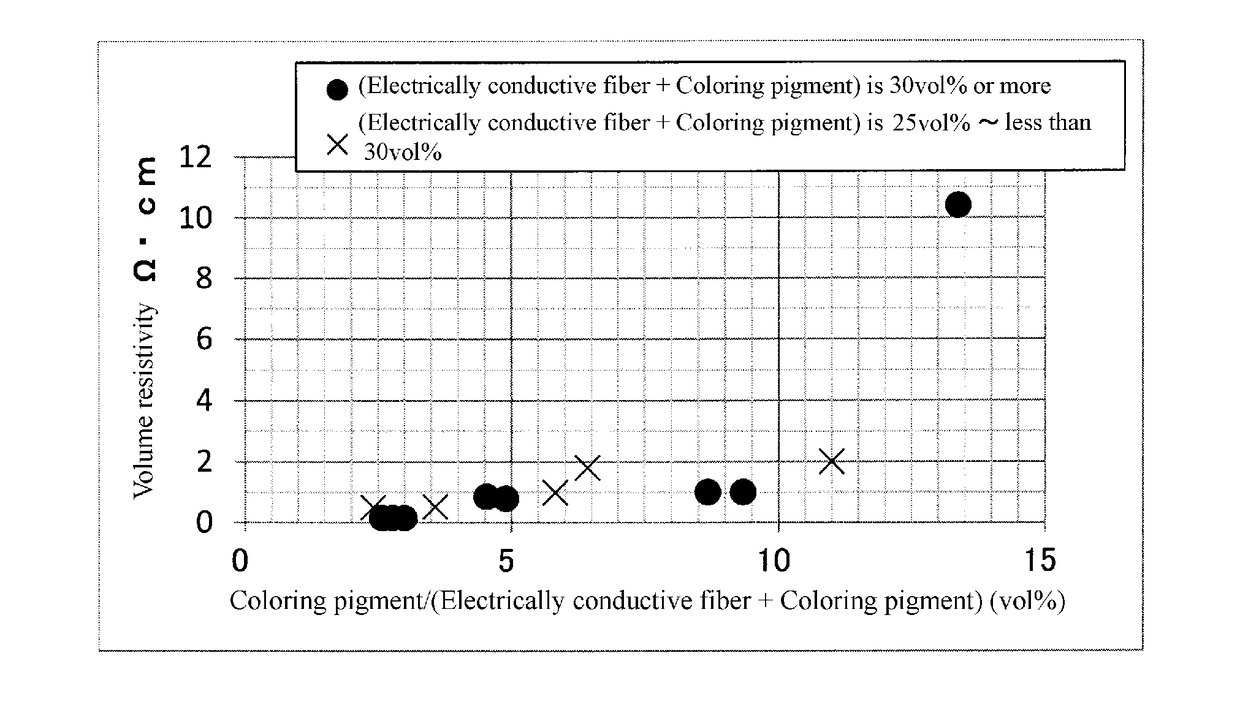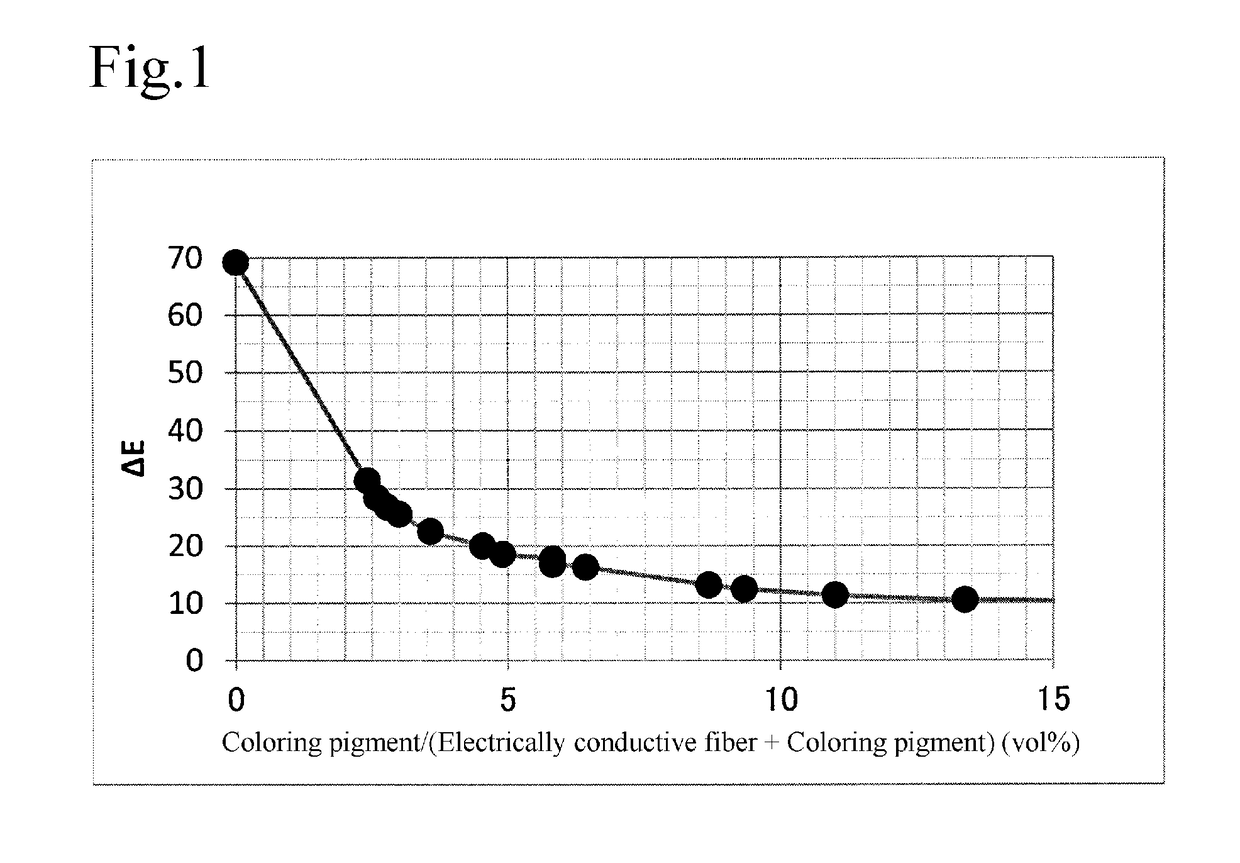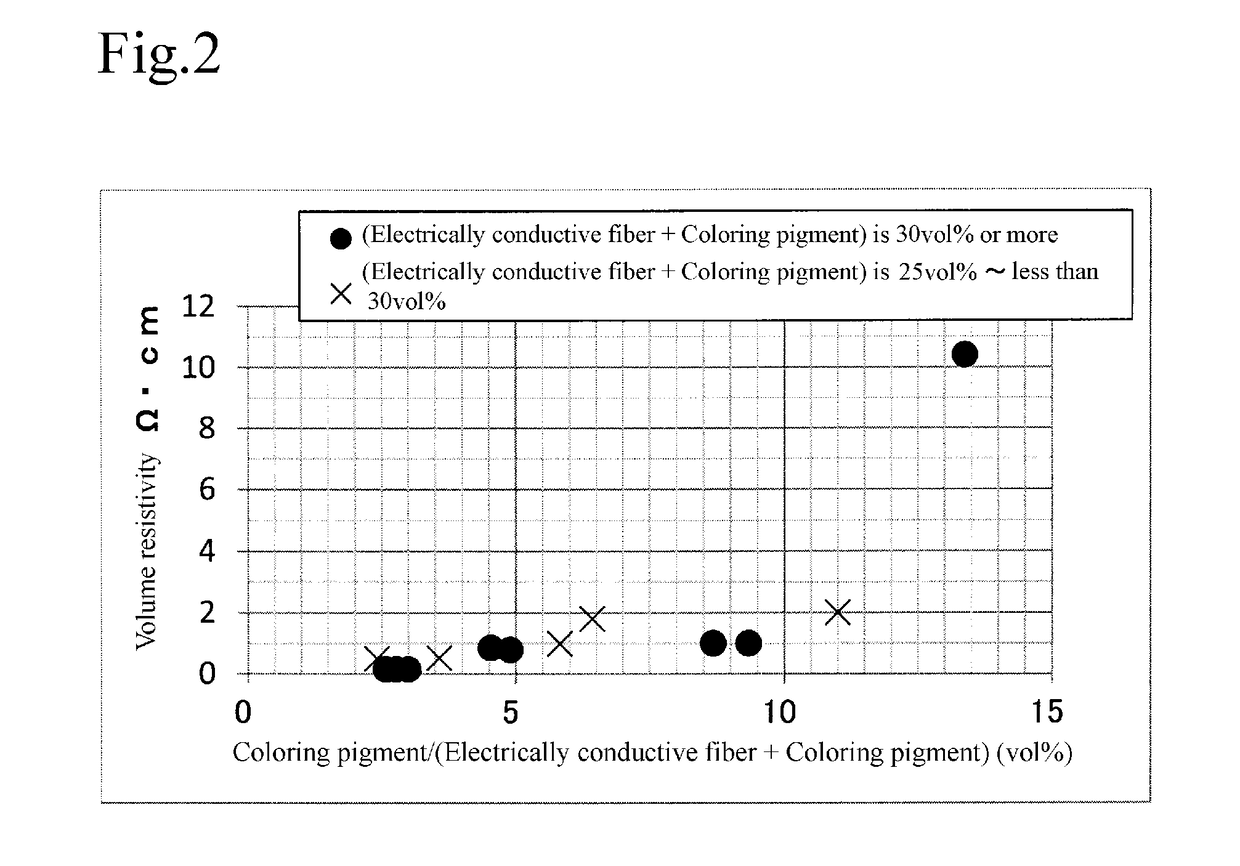Electrically Conductive Member
a technology of electrically conductive components and conductive materials, which is applied in the direction of non-conductive materials with dispersed conductive materials, etc., can solve the problems of affecting the flexibility of electrically conductive members, decreasing the relative amount of coloring agents, etc., and achieves excellent color tone, good dispersibility, and high durability.
- Summary
- Abstract
- Description
- Claims
- Application Information
AI Technical Summary
Benefits of technology
Problems solved by technology
Method used
Image
Examples
example
[0031]Next, the present invention is described based on Example.
[0032]Sample 1: 100 mass parts of silver-coated glass fiber (silver content: 15 mass %, specific gravity: 2.92, fiber diameter: 12 μm, and mean fiber length: 50 μm) as electrically conductive fiber, and 5 mass % of a coloring paste containing a coloring pigment (including 55 mass % of carbon black as a coloring pigment, the remainder being silicone oil) were mixed with 100 mass parts of millable silicone rubber (A hardness: 15, specific gravity: 1.04) to obtain an electrically conductive composition. Next, a cylindrical test piece A having a diameter of 5 mm and a height of 3 mm, and a test piece B having dimensions of 30 mm×30 mm×6 mm were molded from the above electrically conductive composition in a mold. These are referred to as Sample 1, and the composition thereof is also shown in Table 1.
[0033]Samples 2 to 16: a test piece A and a test piece B were formed as in Sample 1 except that the composition of the electric...
PUM
| Property | Measurement | Unit |
|---|---|---|
| Electrical resistivity | aaaaa | aaaaa |
| Electrical resistivity | aaaaa | aaaaa |
| Electrical conductivity | aaaaa | aaaaa |
Abstract
Description
Claims
Application Information
 Login to View More
Login to View More - R&D
- Intellectual Property
- Life Sciences
- Materials
- Tech Scout
- Unparalleled Data Quality
- Higher Quality Content
- 60% Fewer Hallucinations
Browse by: Latest US Patents, China's latest patents, Technical Efficacy Thesaurus, Application Domain, Technology Topic, Popular Technical Reports.
© 2025 PatSnap. All rights reserved.Legal|Privacy policy|Modern Slavery Act Transparency Statement|Sitemap|About US| Contact US: help@patsnap.com



